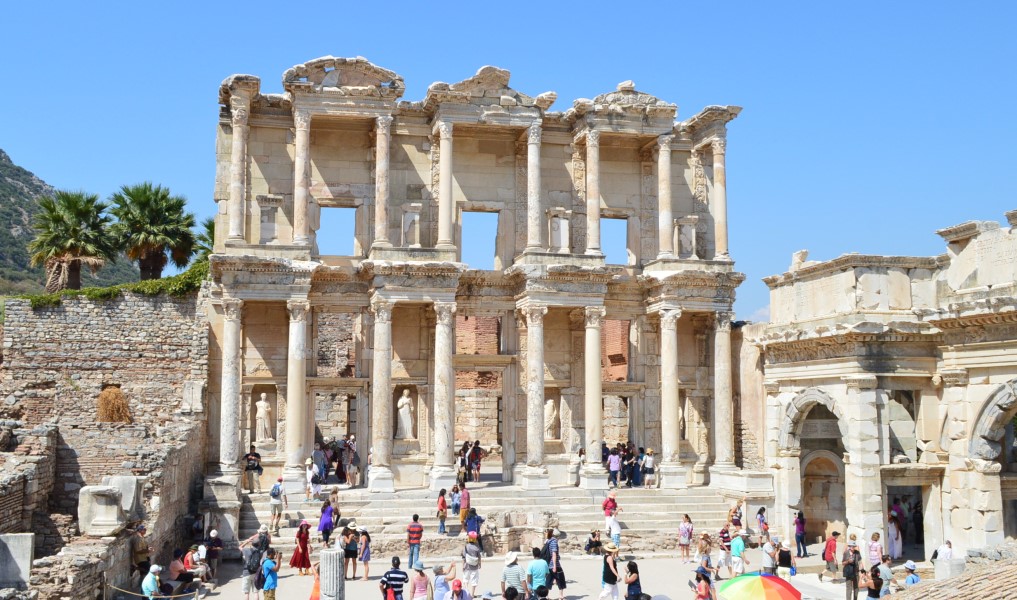The ancient ruins of Ephesus are located in modern day Turkey on the Ionian Coast. The city was originally constructed in the 10th century B.C.E. by the ancient Greeks. However, the Ephesus location had always been situated on the dividing line between the eastern and western civilizations. As a result, the city was overrun each time the dividing line between ancient Persia and Greece changed hands.
Additionally, the city was ideally suited with a natural harbor and that gave it an important economic advantage. Therefore, the city was an attractive location for the Romans who succeeded the Greek Empire. The Romans would subsequently take control of the city for many centuries.
However, it was the construction of the Ephesus Temple of Artemis in 550 B.C.E. which was to become the city’s most alluring aspect. The temple was one of the “Seven Wonders of the Ancient World”. As a result, it would draw the attention of Alexander the Great and he would visit the city during his conquest of Persia.
The fact that Ephesus had been visited by Alexander The Great captured my interest. Therefore, we visited Ephesus during our travels through Turkey. However, there are many reasons to visit the city besides the allure of Alexander and I will also cover them in the post below. Including the Temple of Artemis.
Hercules Gate
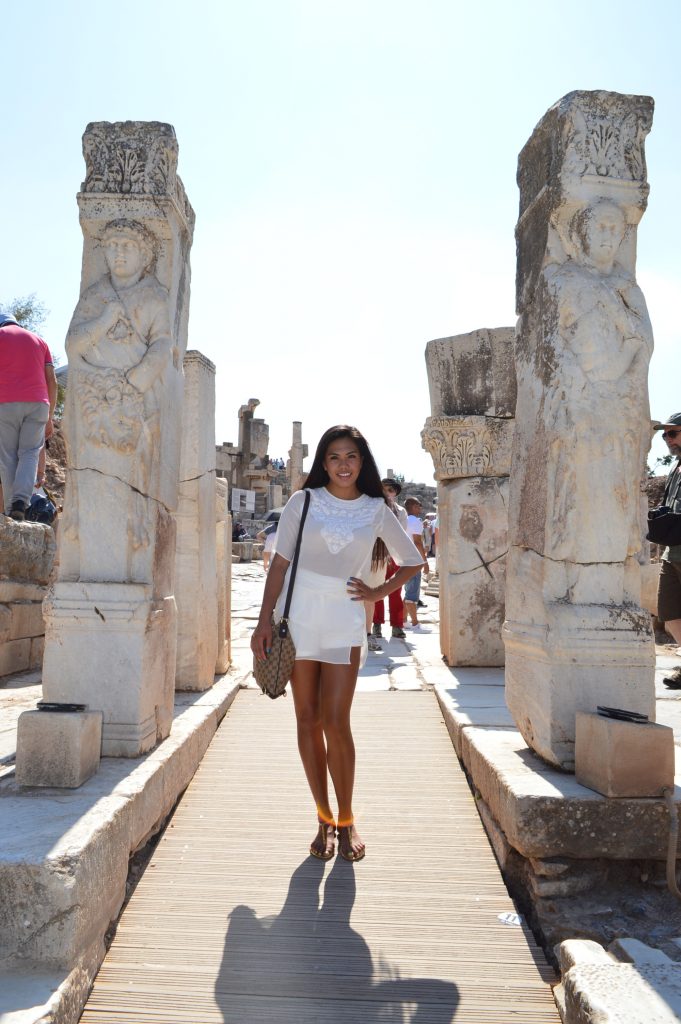
The Hercules Gate is located near the upper entrance of Ephesus on Curetes Street. In ancient times the narrow gate blocked all vehicular traffic from entering this part of the city. As a result, this area was reserved exclusively for pedestrians.
Heracles (called Hercules to the Romans) was the ancient Greek God of strength and power. He is depicted here wearing the skin of the slain Nemean lion. The Nemean lion was a creature of ancient Greek myth whom had been terrorizing the city of Nemea. This ferocious beast had impenetrable skin and could not be killed by human weapons. Therefore, Heracles was called upon to save the city. He succeeded in killing the lion by ramming his fist down it’s throat and choking it to death.
After stopping at the Hercules Gate for photos we continued on down Curetes Street towards the “Library of Celsus”. But first we would stop off at the “Terrace of Houses”. The entrance to the terrace is situated on the immediate left in the photo under the protective cover.

“Terrace of Houses” Roman Ruins at Ephesus
The “Terrace of Houses” are well preserved homes of the wealthy Romans. For a reasonable entrance fee visitors can enter the excavation area and view the ancient Roman mosaics and other structures.
The terrace ruins at Ephesus contained Roman mosaic art that was similar to mosaics that were recovered at the Pompeii ruins in Italy.
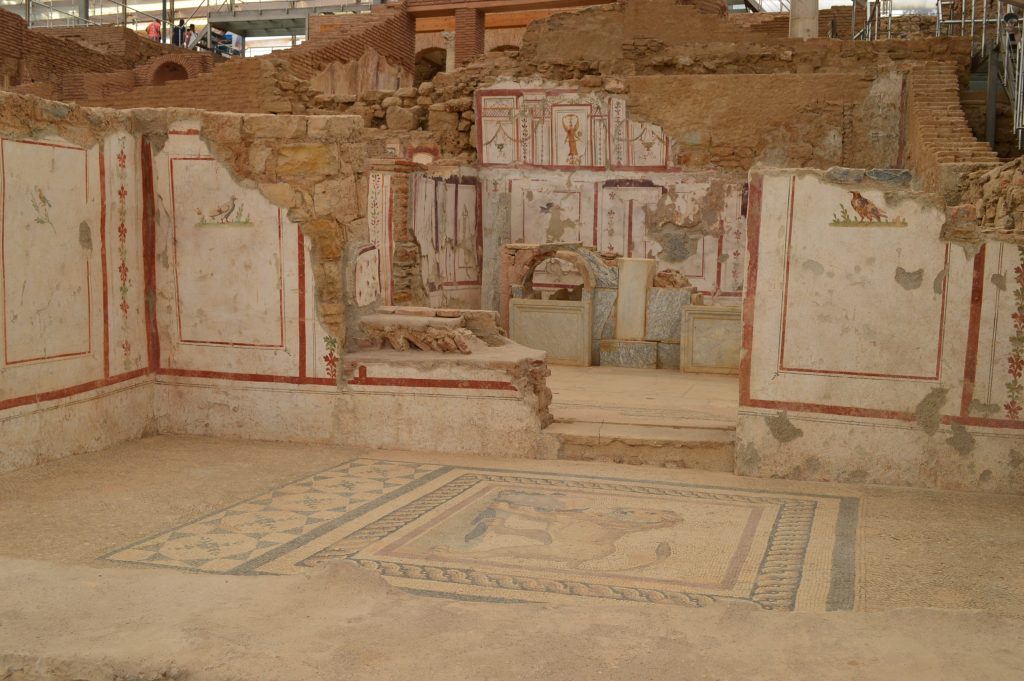


The terrace was built into a hillside. As a result, I was able to step out back and get a good photo of the city lying below. On the bottom left you can see the “Library of Celsus” where we are heading next. Additionally, in the distance you can make out the Ephesus amphitheater.

“Library of Celsus” at Ephesus
Located adjacent to the Terrace of Houses is the Library of Celsus. This is one of the most popular features of the ancient city ruins. However, it is a bit misleading because the facade of the building was exaggerated to create a grande entrance. Although once inside, the interior would have been much more humble than it seemed.
The library was built and funded by Celsus who was a powerful resident of Ephesus that served as the Roman Governor of Asia from 105-107 A.C.E. Unfortunately, Celsus died before completion of the library. However, it was posthumously completed and dedicated to him by his son. The founder is buried in a tomb underneath the remaining structure.

Ephesus Amphitheater
The Ephesus amphitheater is situated at the far lower end of the city near where the ancient city’s harbor would have been located. However, the harbor finally silted up in the 7th century A.C.E.
Modern day experts estimate that the ancient population of Ephesus at this time was between 30,000 and 50,000. This is in contrast to previous estimates of 250,000. However, the amphitheater was built to hold a maximum of 25,000 spectators.
If the city’s population was actually less than 50,000, doesn’t it seem that 25,000 amphitheater seats would be way too many? Not if they really loved theater I suppose.
Initially, the amphitheater was only used for theatrical productions. However, evidence now exists that it eventually was used for gladiatorial contests. Although the staging area seems a bit small…..I suppose spectators would be well advised not to sit in front when the man eating lions were in town.
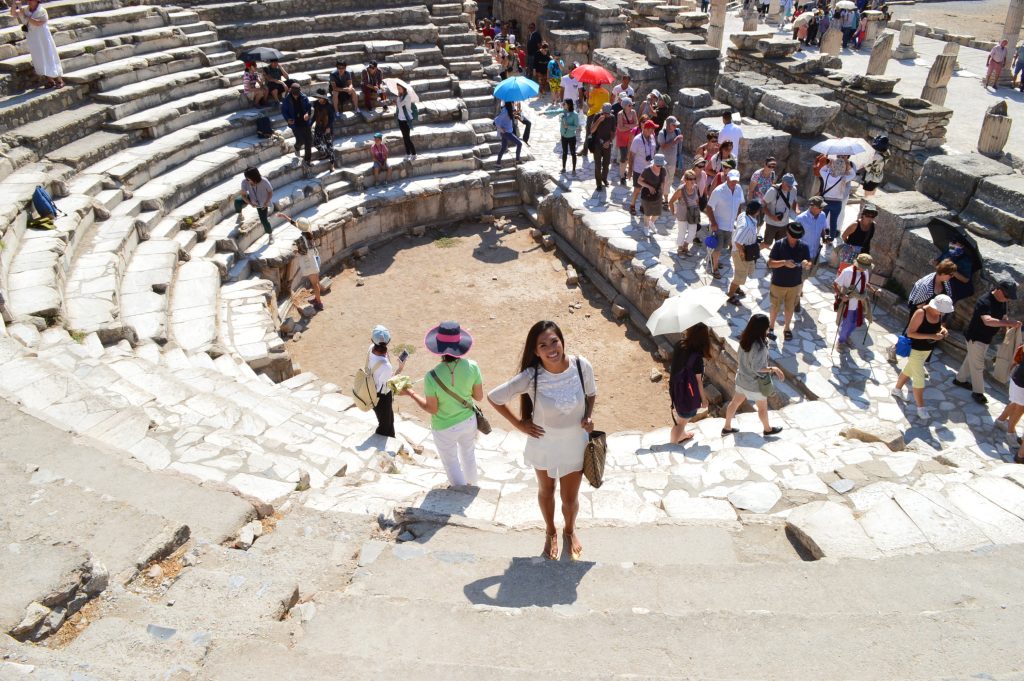
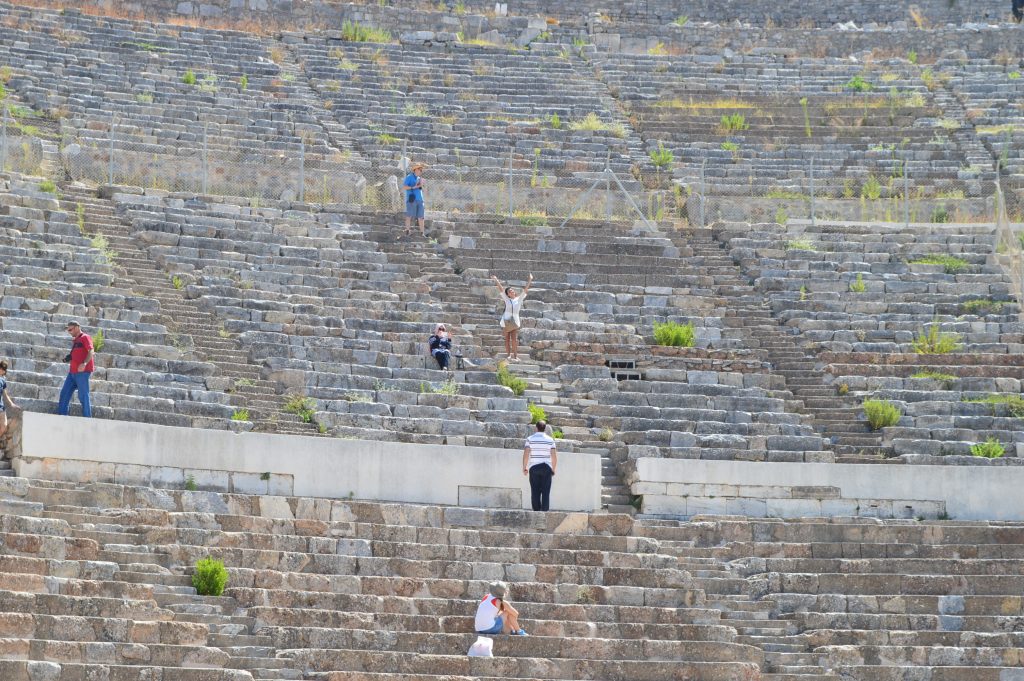
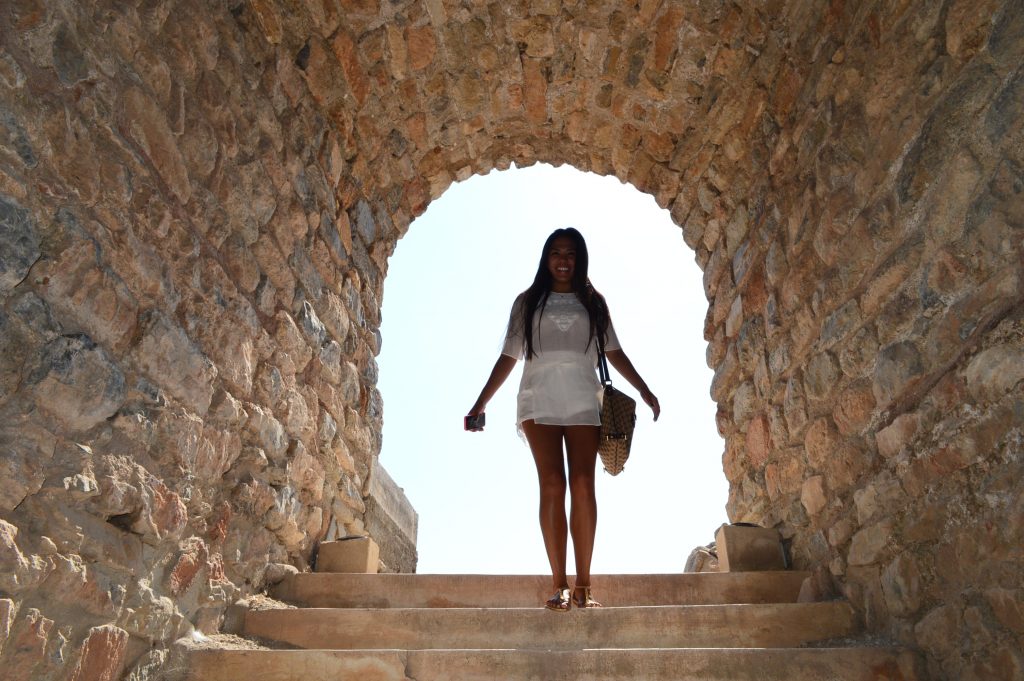
The Greek Temple of Artemis
Artemis was a Greek goddess who was the daughter of Zeus and Leto and she is the twin sister of Apollo. Unfortunately, the temple was destroyed and rebuilt three times before its final destruction in 401 A.C.E. Artemis is often depicted as the “Huntress” carrying a bow and arrows. However, she is also the goddess of wild animals, wilderness, childbirth and virginity. She was known as the Goddess Diana to the Romans.
In 356 B.C.E. the temple was destroyed in a fire by a crazy act of arson committed by an infamous fame seeking man named Herostratus. Apparently, he set the wooden beams on fire which caused the collapse of the marble roof and pillars. Unfortunately, the temple was completely destroyed.
The date of it’s destruction coincided with the birth of Alexander the Great who was born in 356 B.C.E. It is believed by the ancient Greeks that the venerable goddess was too preoccupied with the birth of Alexander to save her own temple from destruction. Alexander perceived this to be strong evidence supporting his own divine origins.
Alexander The Great Visits Ephesus
When Alexander visited Ephesus in 334 B.C.E. he offered to rebuild the temple. However, the citizens of Ephesus very tactfully declined lest they feel his wrath. However, they did eventually rebuild the “Temple of Artemis” after his death at their own expense. Construction was initiated in 323 B.C.E. and it took many years to complete. This third and final temple was much larger than the second, it consisted of 127 columns.
The temple would meet it’s final demise when it was destroyed by the invading Goths in 268 A.C.E. Once again the method of destruction was setting fire to the wooden structural beams in the roof. Unfortunately, there is only one diminutive pillar left standing today.
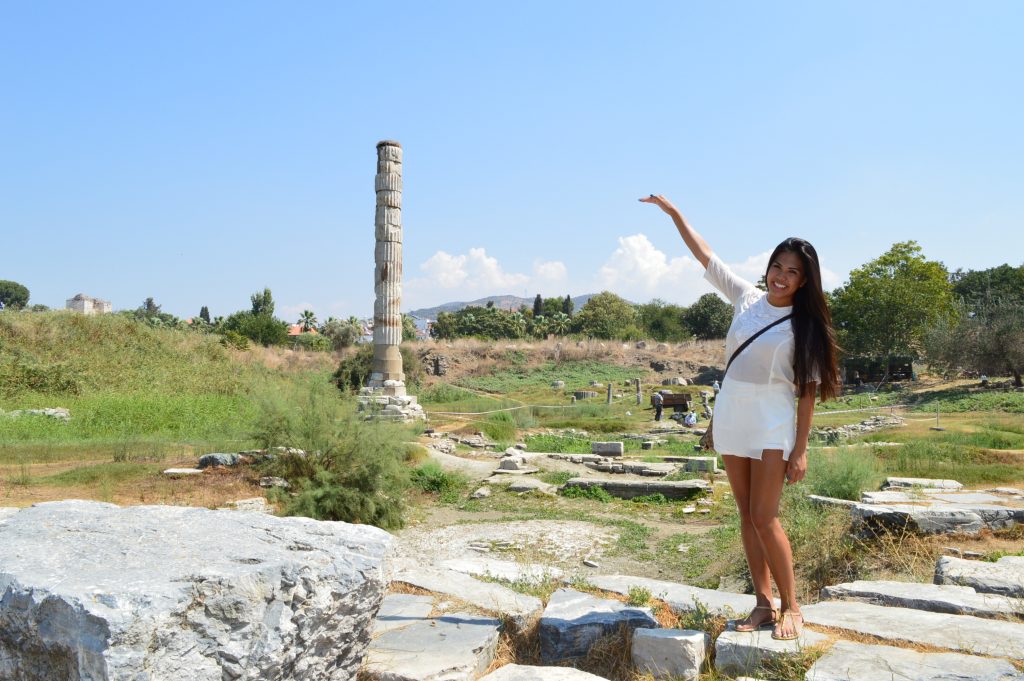
Additional Ephesus Photos:
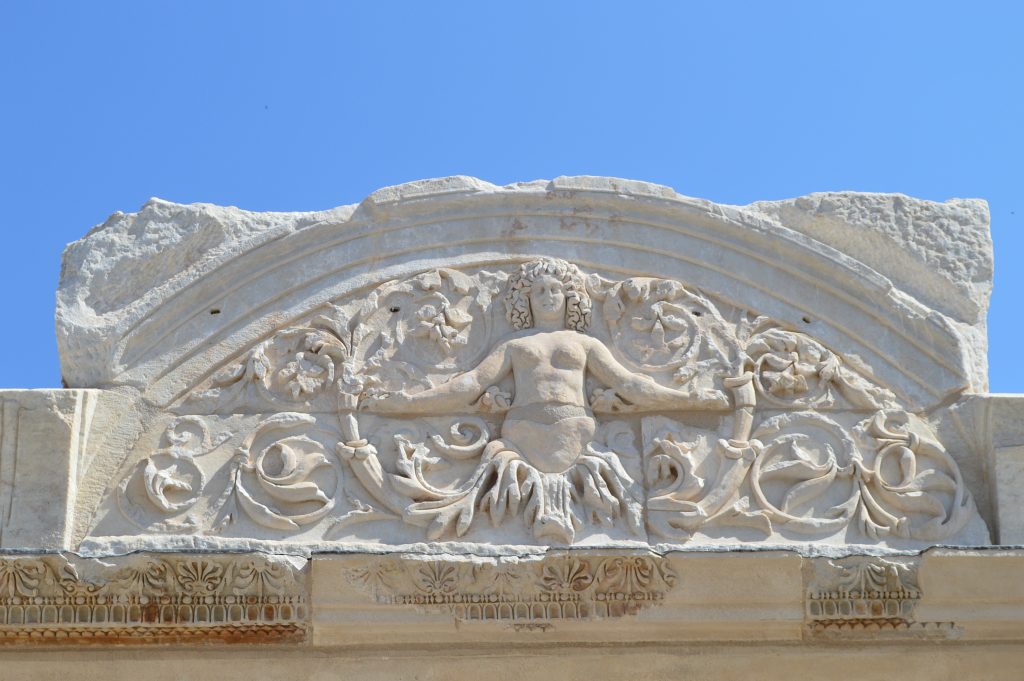

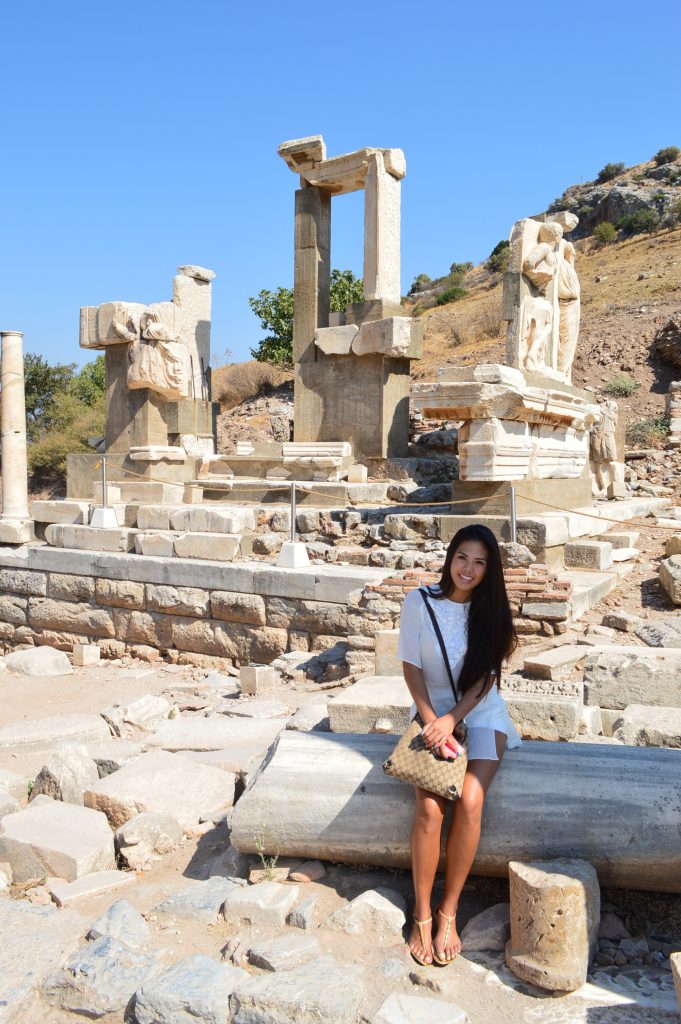
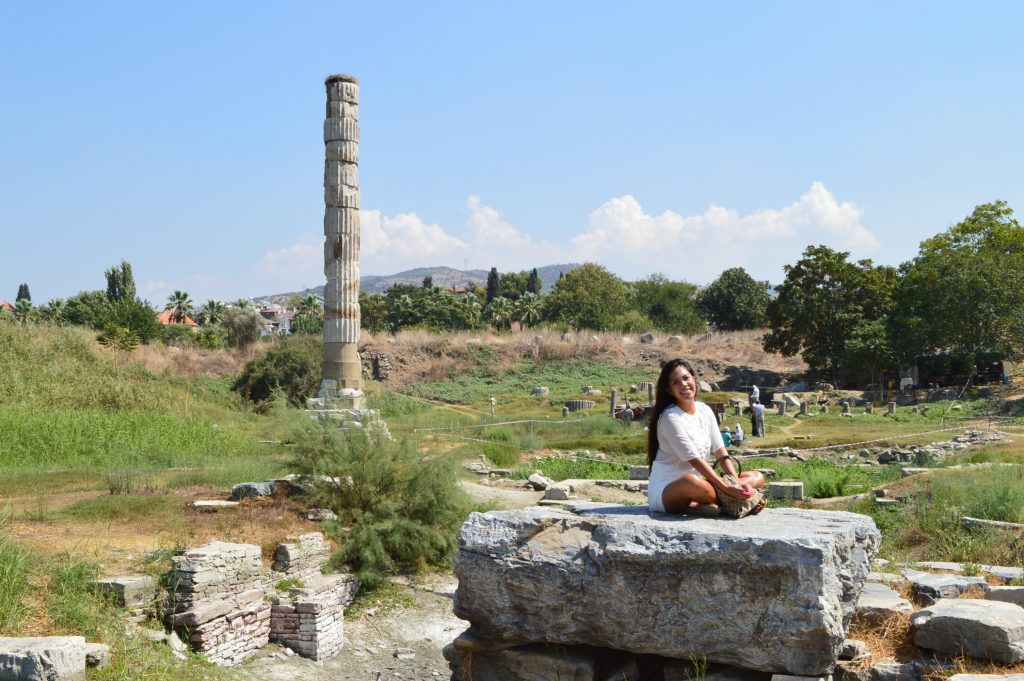

Recommended Turkey Travel Posts
Take the Bosphorus Black Sea Cruise
See the Remnants of the Roman Empire
Enjoy the Istanbul Skyline from Galata Tower

